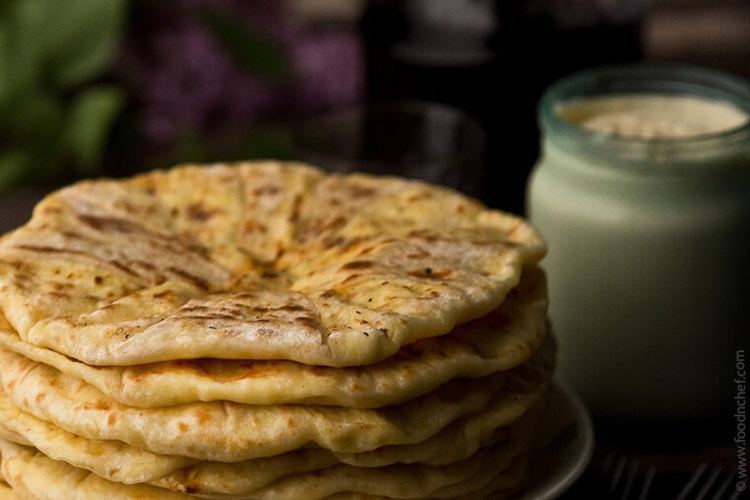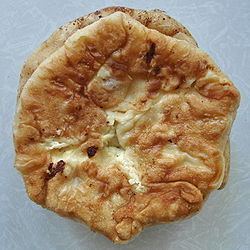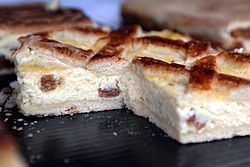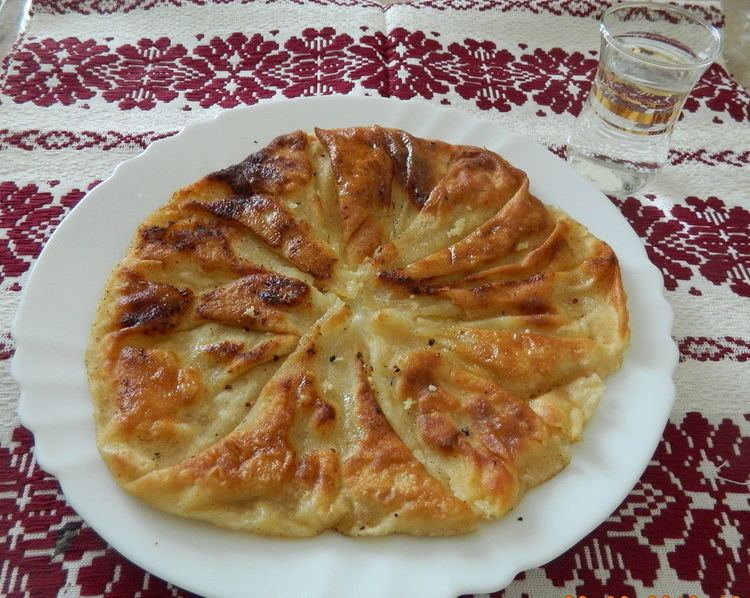 | ||
Similar Cozonac, Ciorbă, Kashkaval, Mămăligă, Gogoși | ||
nv m s facem pl cint cu br nz cu nicoleta mocanu 26 iunie 2013
Plăcintă is a Romanian and Moldovan traditional pastry resembling a thin, small round or square-shaped cake, usually filled with a soft cheese such as Urdă or apples.
Contents
- nv m s facem pl cint cu br nz cu nicoleta mocanu 26 iunie 2013
- Cheese rolls pie pl cint cu br nz savija a sa sirom
- Etymology
- History
- Traditional varieties of plcint
- References

Cheese rolls pie pl cint cu br nz savija a sa sirom
Etymology
The word plăcintă comes from Latin placenta, which means cake, from the Greek plakount – "flat cake".
History

As shown by the etymology of the word, the plăcintă has a Roman origin, and dates from when Romania was a part of the Roman Empire, see placenta cake.

Ancient Greek bakers made their bread with olive oil, herbs and cheese. The secret of making cakes was given to the Romans during the invasion. At first there were only two varieties of cakes, called the libum and the placenta. The libum was a small cake, used as an offering to the gods. As for the placenta, the Romans developed the recipe as a cake made of fine flour covered with cheese, honey, and fragrant bay leaves. Ancient Roman bakers customarily prepared a large placenta which was cut into squares to be offered for sale. This is the way that Romanians continue to prepare their plăcintă.
Traditional varieties of plăcintă

